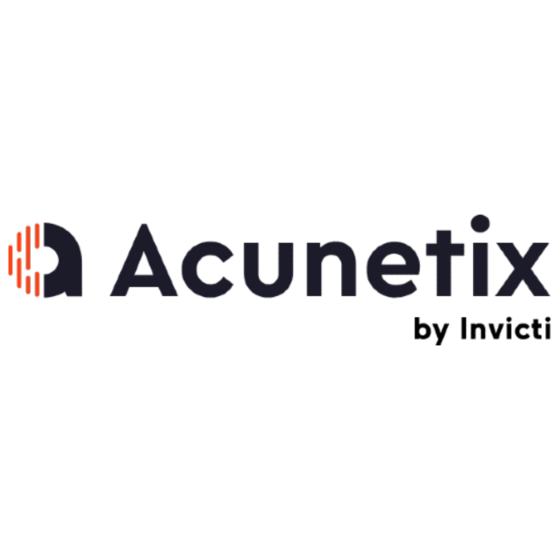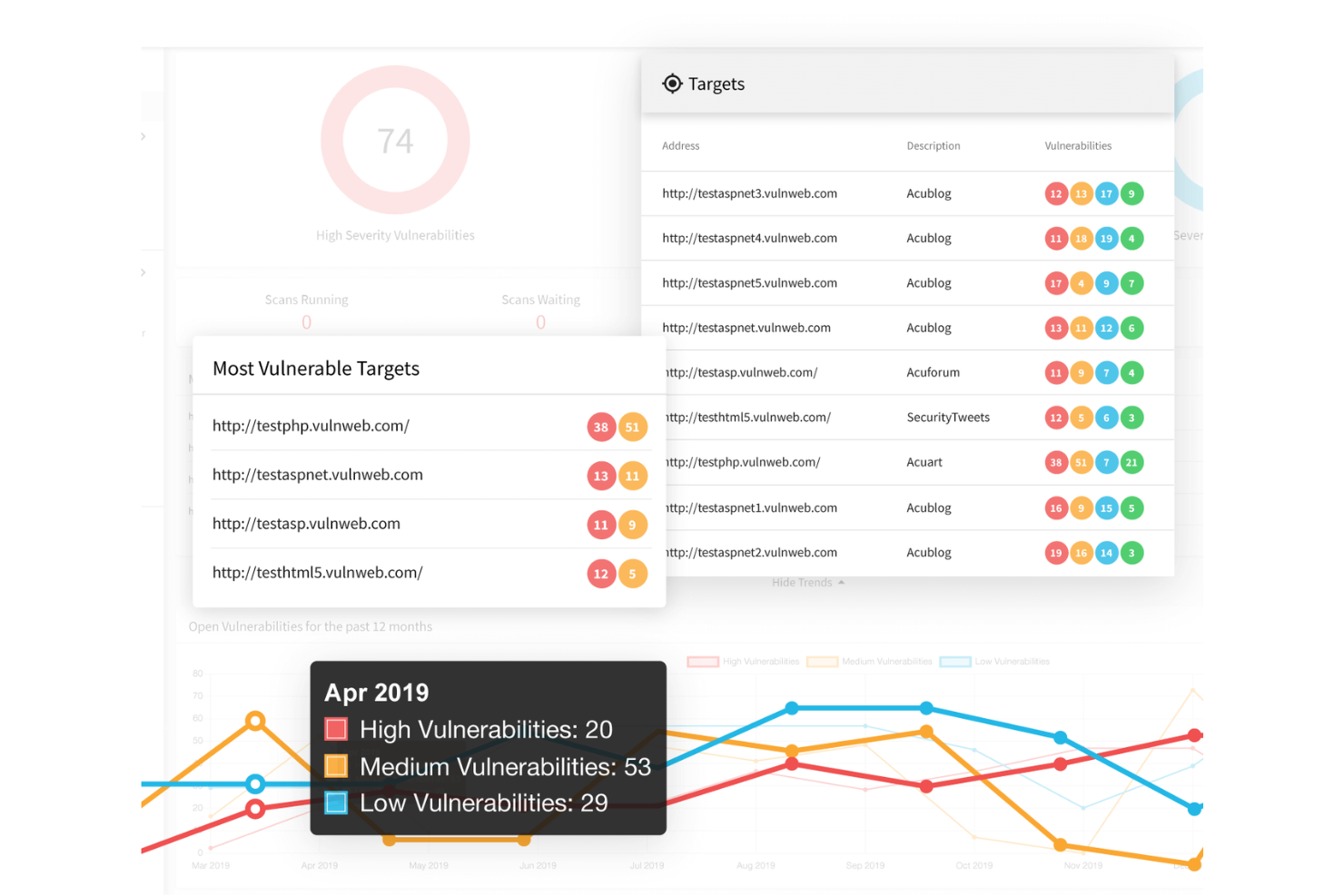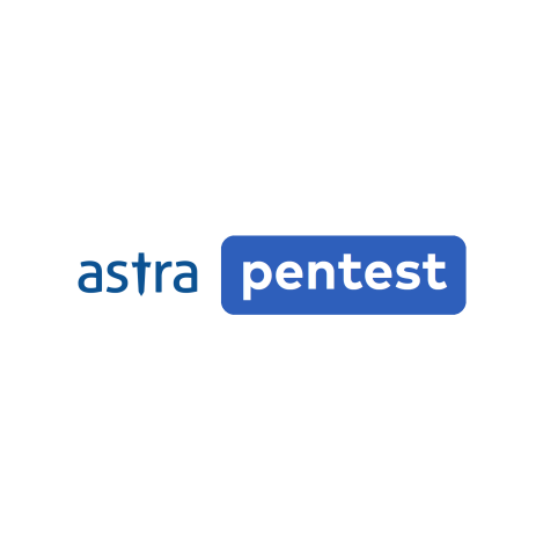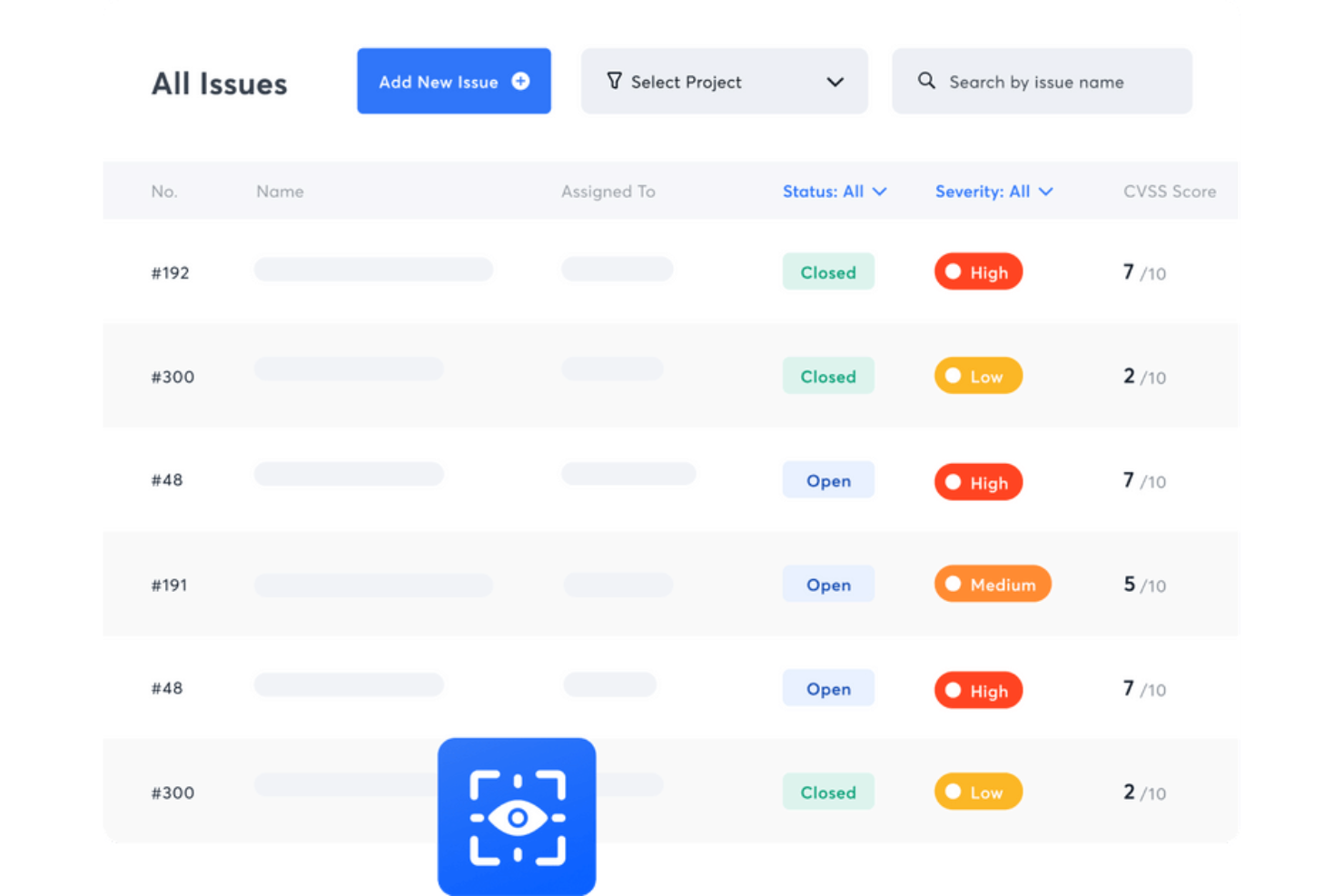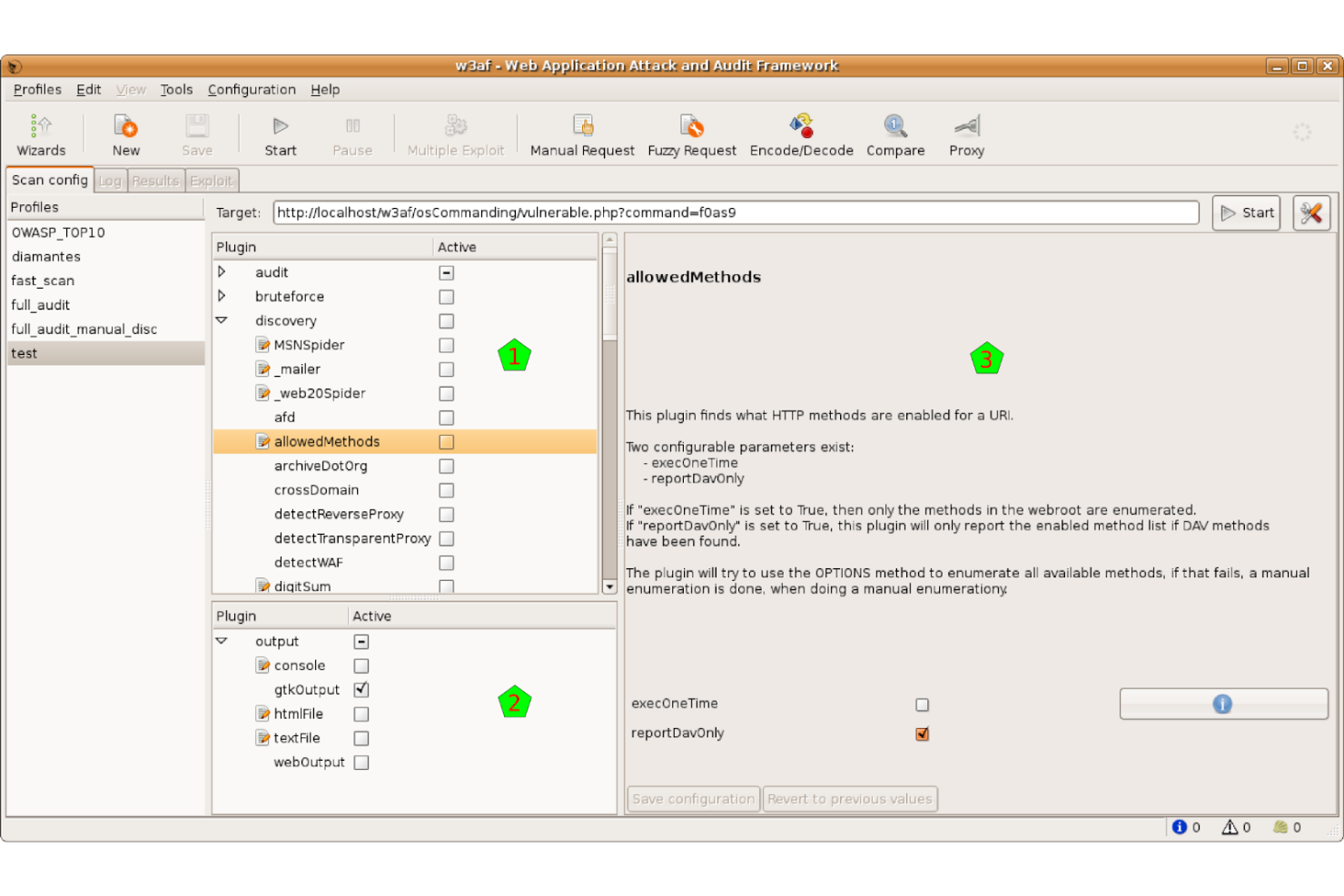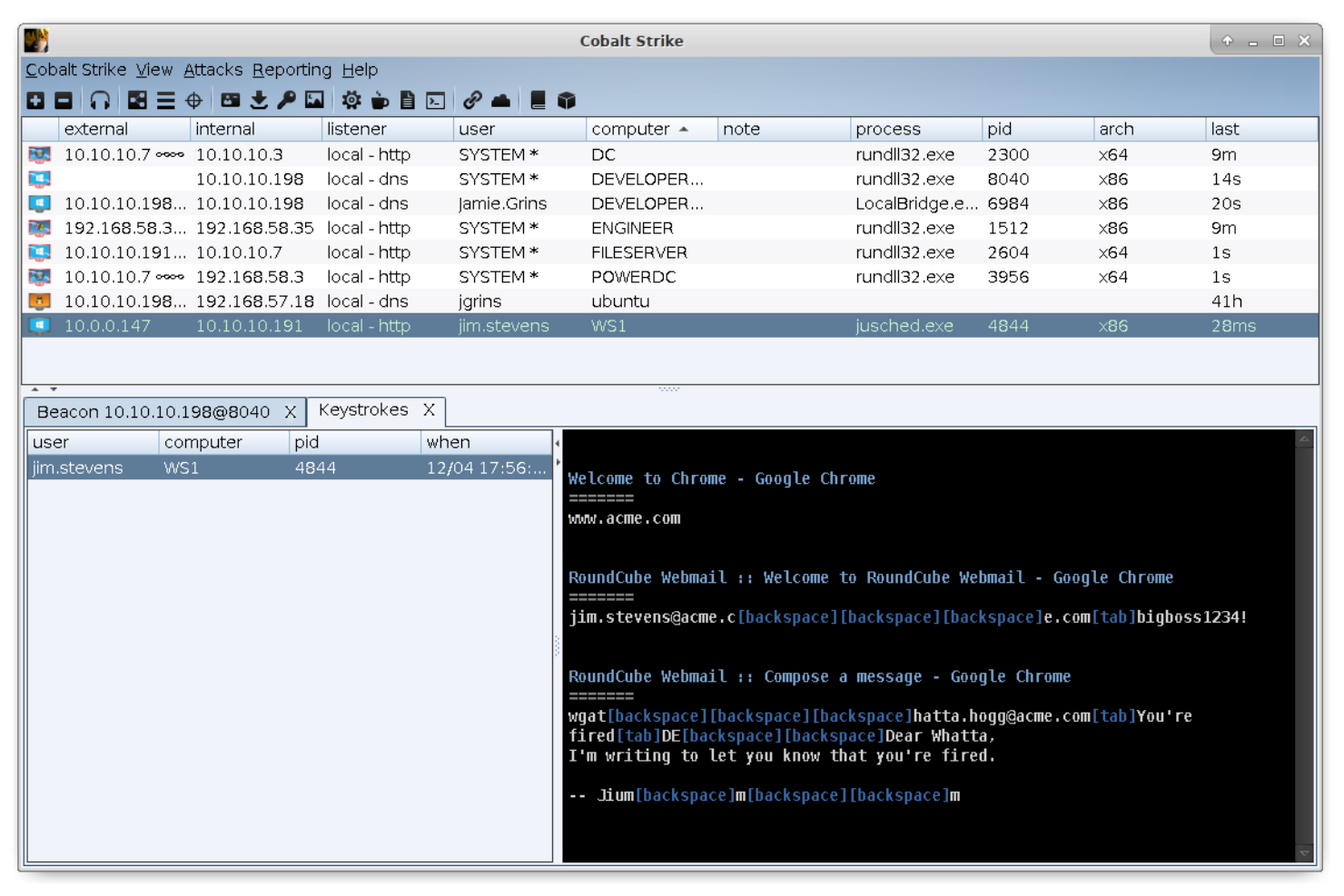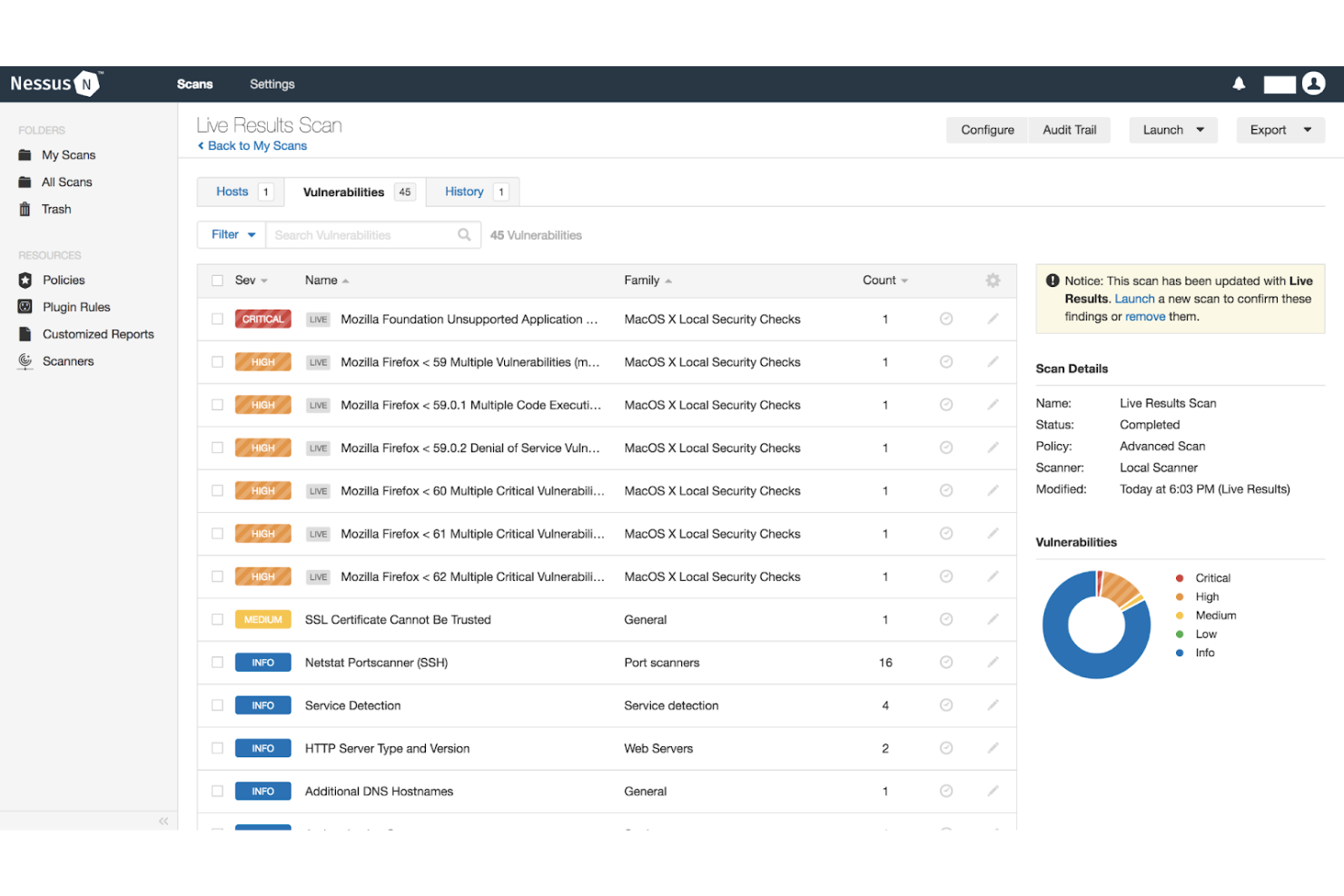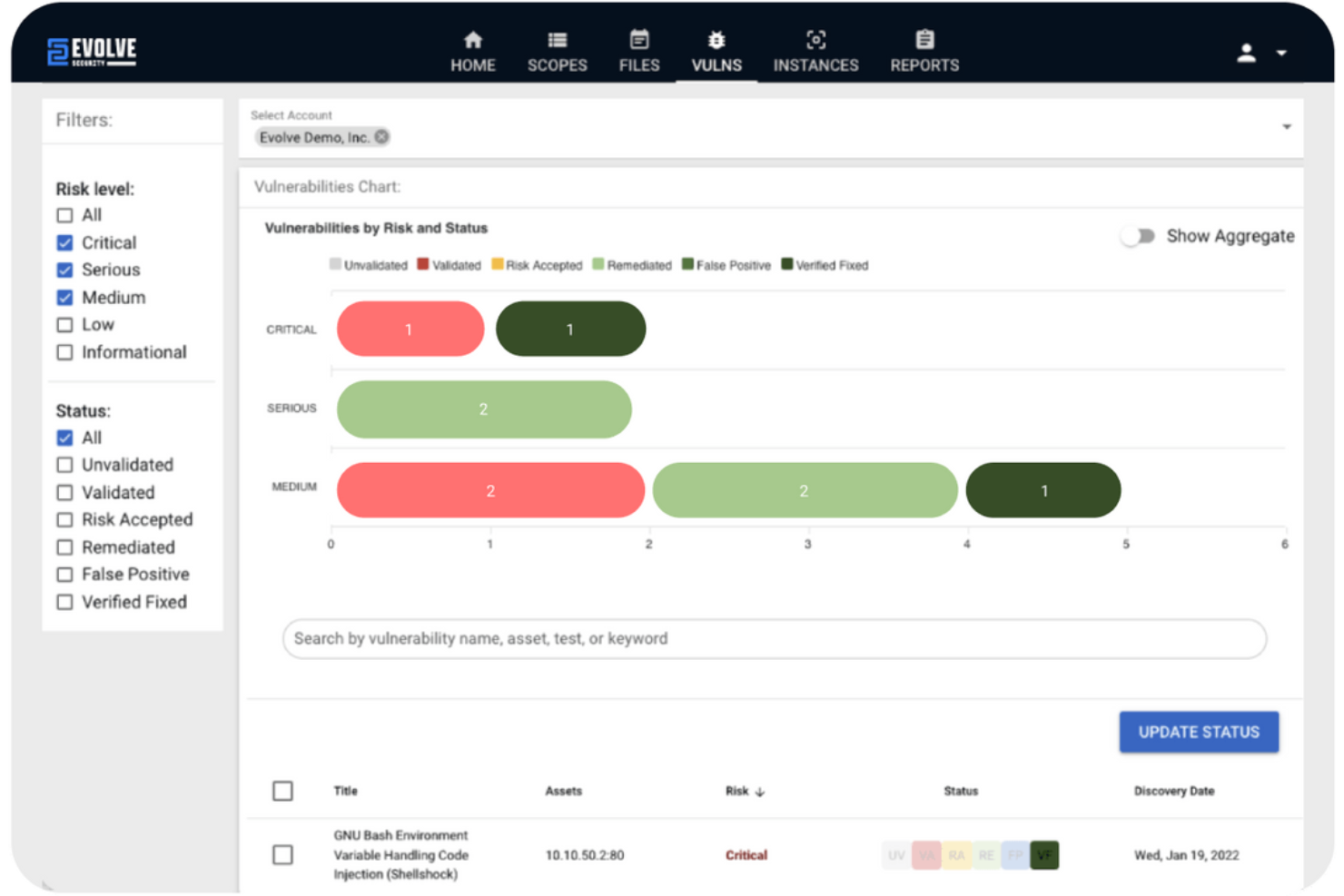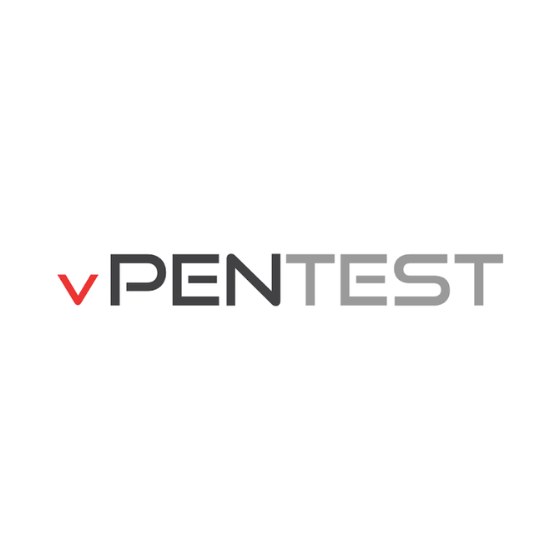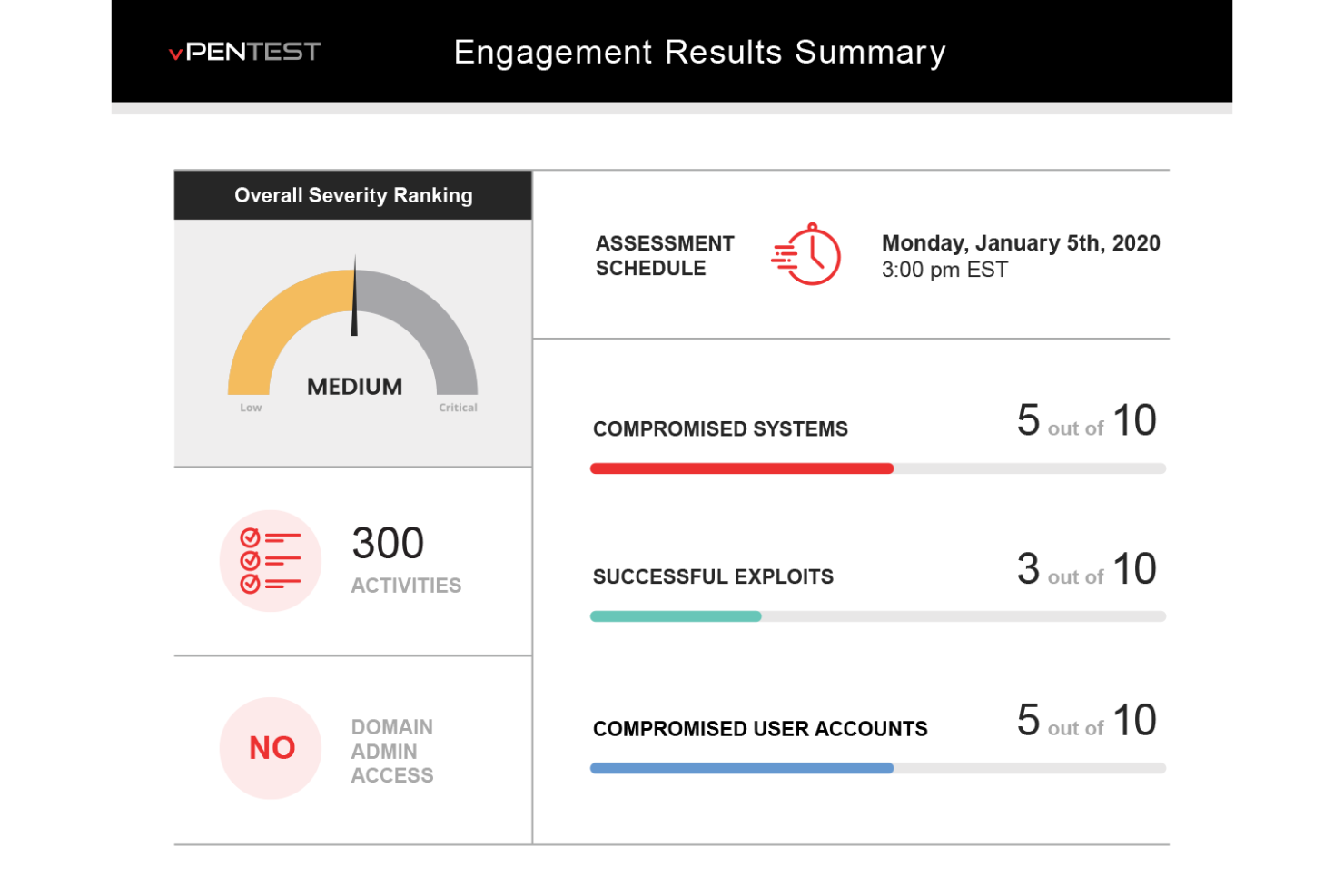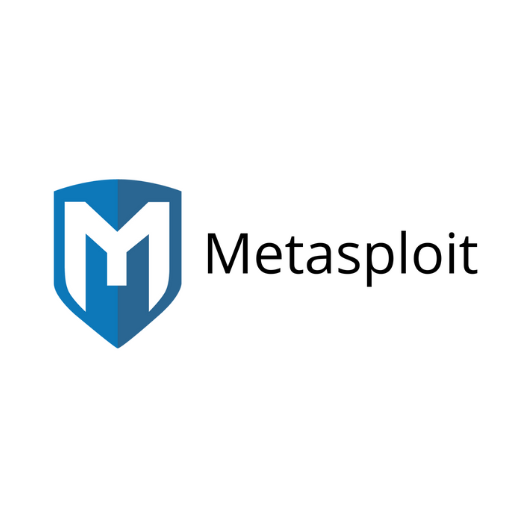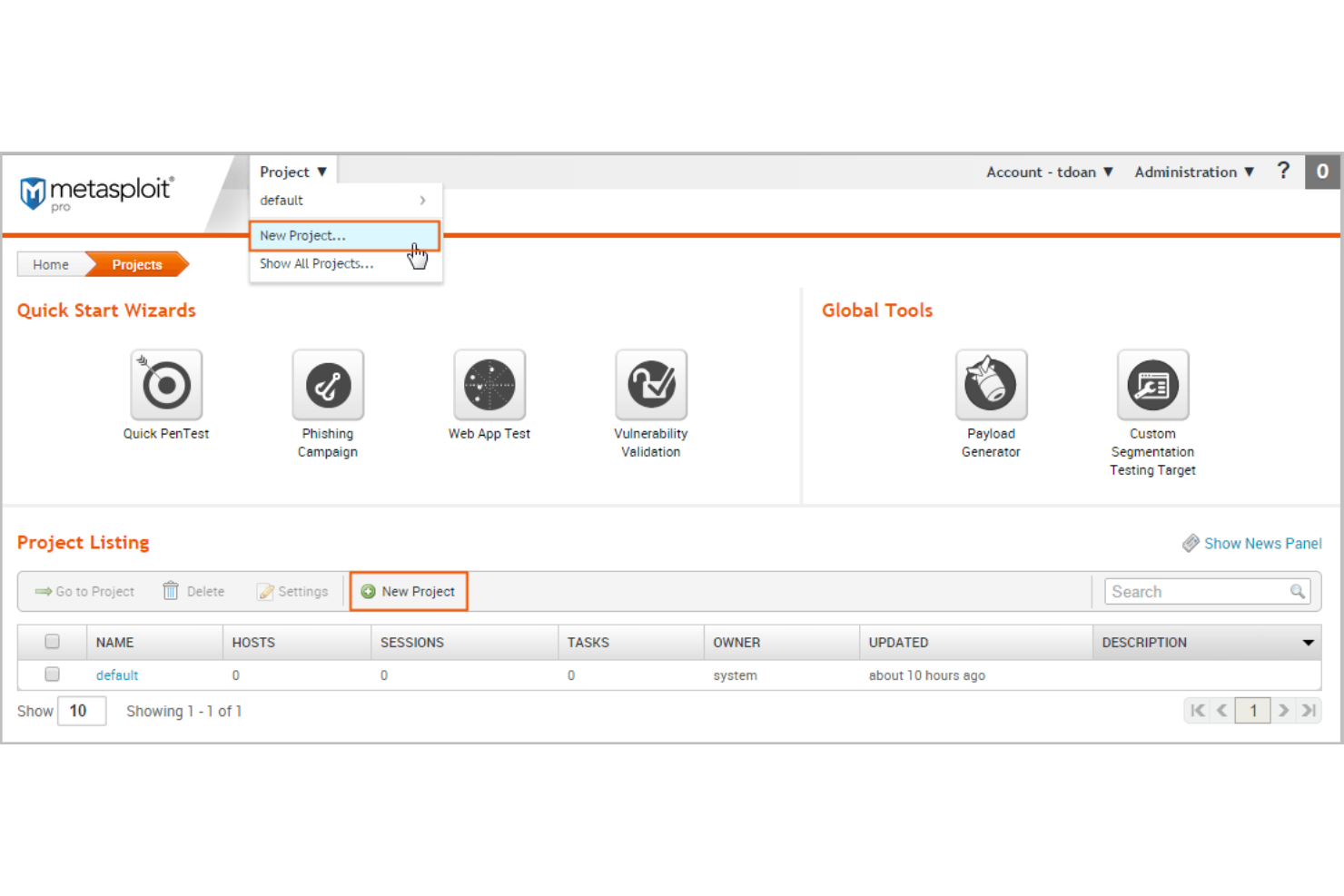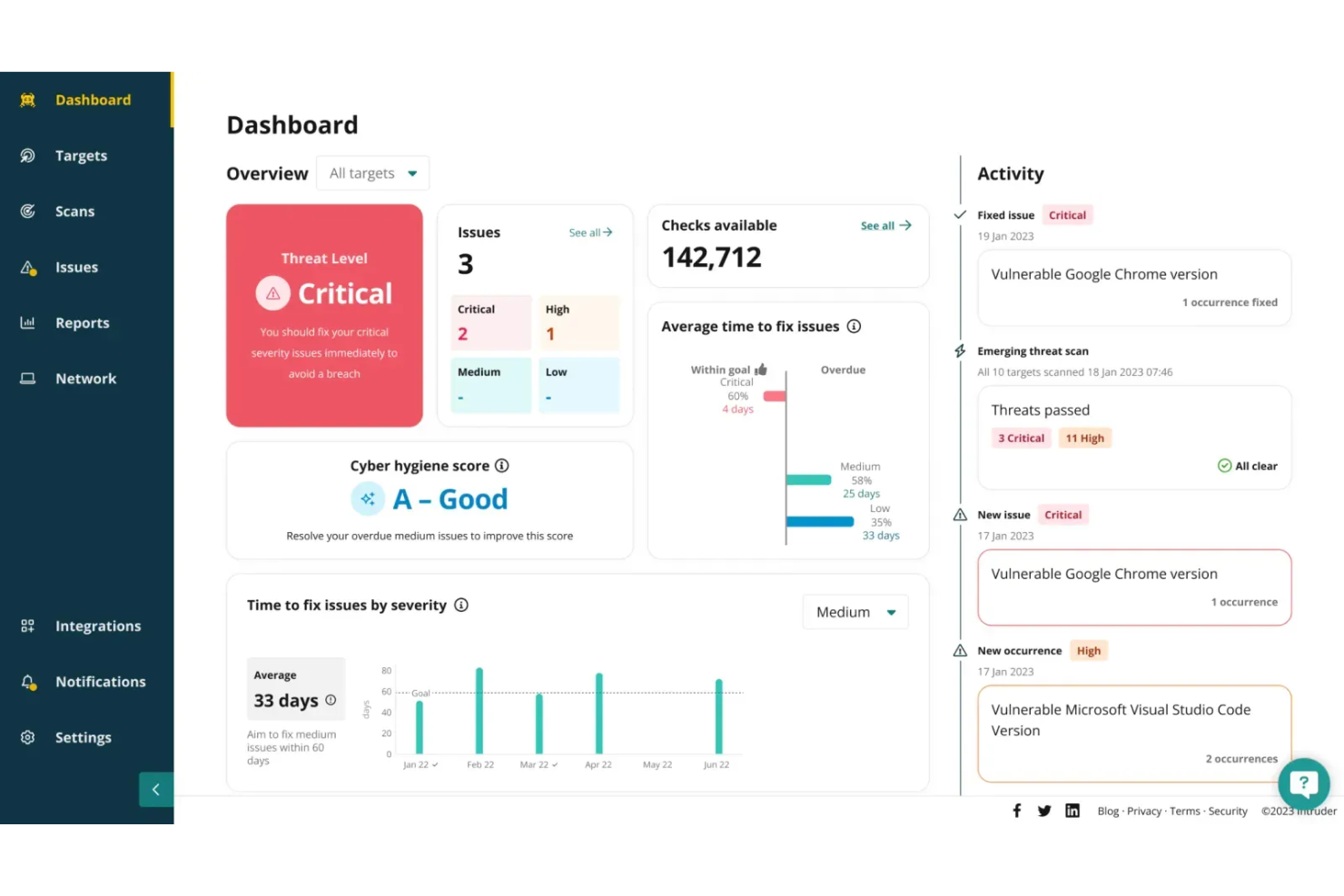10 Best Enterprise Penetration Testing Tools Shortlist
Here's my pick of the 10 best software from the 20 tools reviewed.
Our one-on-one guidance will help you find the perfect fit.
With so many different enterprise penetration testing tools available, figuring out which is right for you is tough. You know you want to proactively fortify your organization's defenses against potential cyber threats but need to figure out which tool is best. I've got you! In this post I'll help make your choice easy, sharing my personal experiences using dozens of different enterprise penetration testing software with a variety of teams and projects, with my picks of the best enterprise penetration testing tools.
What Are Enterprise Penetration Testing Tools?
Enterprise penetration testing tools are software that simulate cyberattacks on an organization’s network and systems to identify and assess vulnerabilities. These tools mimic the techniques used by hackers to evaluate the strength of an enterprise's cybersecurity defenses. They are employed to probe networks, applications, and other digital infrastructures, uncovering security weaknesses that need to be addressed.
The benefits of using enterprise penetration testing tools include enhanced cybersecurity posture and proactive risk management. They enable organizations to discover and rectify security vulnerabilities before they can be exploited by malicious actors, thereby preventing potential data breaches and cyberattacks. These tools are essential for maintaining compliance with regulatory standards and ensuring the ongoing security of sensitive data and systems. Additionally, they provide valuable insights for informed decision-making in strengthening security protocols and training staff on cybersecurity awareness.
-

Docker
Visit WebsiteThis is an aggregated rating for this tool including ratings from Crozdesk users and ratings from other sites.4.6 -

Pulumi
Visit WebsiteThis is an aggregated rating for this tool including ratings from Crozdesk users and ratings from other sites.4.8 -

GitHub Actions
Visit Website
Overviews Of The 10 Best Enterprise Penetration Testing Tools
Below, you’ll find an overview of each of the 10 best enterprise penetration testing tools with screenshots, key feature highlights, pricing, and pros and cons.
Acunetix
Best for command-line and GUI-based manual penetration testing
Acunetix helps you detect 7,000+ vulnerabilities with blended DAST and IAST scanning. It lets you run ultra-fast scans and get actionable results in minutes.
Why I picked Acunetix: It lets you manage loopholes effectively. You can use automation to prioritize your high-risk vulnerabilities. The tool allows you to schedule one-time or recurring scans and assess more than one environment at a time. Acunetix eliminates false positives and helps you save time and resources from hours of manually validating real vulnerabilities.
Acunetix Standout Features and Integrations
Standout features include pinpointing vulnerability locations and getting remediation guidance. You can trace the exact line of code where the loophole lies, helping you to fix issues quickly. Results come with the information that guides developers through the remediation process.
Acunetix has advanced scanning features, which enable you to run automated scans in hard-to-reach places. The software allows you to scan almost anywhere, including single-page applications (SPAs), script-heavy sites, password-protected areas, complex paths and multi-level forms, and more.
Integrations include GitHub, Jira, Jenkins, GitLab, Bugzilla, Okta, Microsoft Teams, and Mantis Bug Tracker.
Pros and cons
Pros:
- You can schedule tests
- Get scan results in minutes
- Ultra-fast scans
Cons:
- Long customer service response time
- Beginners struggle with complex settings
Best for offering publicly verifiable security certificates
Astra Pentest is an enterprise penetration testing tool that offers an industry-leading continuous vulnerability scanner, comprehensive testing, and smart vulnerability management.
Why I picked Astra Pentest: It provides expert human support to help you fix any issues, which makes it stand out from top alternatives. When you encounter challenges while using this software, there is a standby team of experts to help you resolve problems. As a result, Astra Pentest is easy to use and capable of helping you get rid of loopholes with minimal hassle.
It comes with collaboration features, which allow you to collaborate with your team to resolve issues efficiently. You can assign tasks to team members, track who does what, create a comment section under each vulnerability, and keep tabs on the status of every issue.
Astra Pentest Standout Features and Integrations
Standout features: Astra Pentest offers a wide range of penetration testing solutions, including web pentest, mobile pentest, API pentest, blockchain pentest, and network pentest. The tool comes with extensive capabilities that allow you to scan every aspect of your IT systems.
It offers a security certificate that’s publicly verifiable. Astra Pentest’s engineers verify your fixes and issue a certificate that is unique to your product. The certificate boosts your brand image and helps you win your customers' trust. The software boosts efficiency with manual testing, which helps you find loopholes that are usually difficult to spot with automated testing.
Integrations include Slack, Jira, GitHub, Microsoft Azure, Bitbucket, GitLab, Jenkins, and CircleCI.
Pros and cons
Pros:
- Good customer support
- Seamless integrations
- Advanced communication features
Cons:
- Long customer support response time
- Generates false positives sometimes
w3af is a web application attack and audit framework, designed to help you keep your web applications secure. It boosts security by enabling you to identify and exploit all web application vulnerabilities.
Why I picked w3af: It’s very easy to use and extend. The vulnerability scanning framework has both a graphical and console user interface. With a few clicks and using the predefined profiles, you can run the security audit of your web application. w3af also has detailed documentation, which includes a comprehensive user guide that makes getting started very easy.
w3af Standout Features and Integrations
Standout features: w3af is designed to enable you to find over 200 vulnerabilities. It helps you boost your site’s security by identifying a wide range of vulnerabilities, including SQL injection, cross-site scripting, guessable credentials, unhandled application errors, and misconfigurations. With plugins, you can extend w3af and expand its capability to find new vulnerabilities, identify new URLs, and more.
Integrations: w3af lets you integrate with third-party software development tools.
Pros and cons
Pros:
- It’s extensible
- Comprehensive documentation
- Easy to use
Cons:
- No detailed product information
- Steep learning curve
Cobalt Strike is a leading vulnerability exploitation emulation software. It provides powerful network attack kits that enable penetration testers to simulate targeted attacks against modern enterprise software systems.
Why I picked Cobalt Strike: I selected this tool because of its flexibility. It provides attack kits you can adjust to suit your penetration testing processes. You’re not constrained by default behaviors built into the software. Cobalt Strike allows you to make changes and introduce your own tools and techniques. This flexibility lets you customize the tool to match different pen-testing tasks.
It’s designed to empower collaboration. The tool enables you to connect to a team server to share data, communicate in real-time, and keep track of what happens during the engagement. There is an active community of Cobalt Strike users that can help you learn the tool faster by providing guidance and answering your questions.
Cobalt Strike Standout Features and Integrations
Standout features: It comes with Beacon, which is a core part of Cobalt Strike. Cobalt Strike Beacon provides a very flexible payload that enables pen-testers to gain and maintain control of compromised systems. It’s this tool’s signature payload, designed to help model the behavior of advanced attacks during vulnerability exploitation simulations and red team engagements.
There are reporting and logging features that offer a timeline and a list of indicators from red team activity. The reports help you make sense of your pen-testing activities and provide the basis for data-based decision-making and remediation. Cobalt Strike reports are exported in both PDF and MS Word documents.
Integrations are available with Hexway Pentest Suite, Raven, GitHub, Metasploit, and more.
Pros and cons
Pros:
- Real-time communication across teams
- Flexible and scalable
- An active community of users
Cons:
- More workflow customization required
- Pricing is on the high side
Tenable Nessus is a vulnerability assessment software designed to help you assess modern attack surfaces. The tool helps secure applications and cloud infrastructure by providing advanced visibility that you need to monitor your organization’s security posture.
Why I picked Nessus: Nessus has a low false positive rate and high accuracy. It provides broad vulnerability coverage. This helps you keep an eye on every part of your software infrastructure. The tool is cross-platform and fully portable; you can deploy it on a wide range of platforms or operating systems, such as Unix, macOS, Windows, and Raspberry Pi.
Nessus Standout Features and Integrations
Standout features include customizable reporting and troubleshooting, live results, and pre-built policies and templates. There are over 450 preconfigured templates designed to help you pinpoint where your security issues lie. With customizable reporting, you can easily report vulnerabilities in ways and formats that best suit your team and stakeholders.
Get a clear view of where you have vulnerabilities based on your scan history with the help of live results. This feature automatically performs an offline vulnerability check with every plugin update. You can easily perform a scan, identify security loopholes, and prioritize issues as you wish.
Integrations include Phoenix Security, Hyperproof, C1Risk, ASPIA, Vulcan Cyber, Conviso, Sn1per, Code Dx, StorageGuard, and Cyver Core.
Pros and cons
Pros:
- Deploy on any platform
- High-level visibility
- It’s customizable
Cons:
- Difficult to use sometimes
- The support portal is slow at times
Darwin Attack, by Evolve Security, is a real-time penetration testing platform that offers a range of pen-testing services that enable you to find and resolve vulnerabilities across your IT systems.
Why I picked Darwin Attack: The software offers collaboration features that allow you to keep tabs on updates as the results of vulnerability scanning are posted to the portal by the Evolve Security team members. You can communicate directly with them through the feed to discuss findings or ask questions. Darwin Attack lets you track the results and provides integrations with management tools to help streamline vulnerability management.
Darwin Attack Standout Features and Integrations
Standout features: It offers a complete set of pen-testing services, including application penetration testing, cloud penetration testing, network penetration testing, cloud security assessment, and social engineering. Cloud penetration testing solution assesses your cloud infrastructure, identifies security loopholes, and provides reports for remediation. With the network penetration testing offer, Darwin Attack helps you keep your network secure with industry-leading vulnerability assessments.
Integrations include ServiceNow, Jira, Zendesk, Tenable, Slack, and Teams.
Pros and cons
Pros:
- Provides attack details
- Integration with ticketing systems
- Offers remediation recommendations
Cons:
- New users get overwhelmed by the many services
- More customization needed
vPenTest provides easy-to-use automated network pen-testing capabilities that empower you to identify your risks to cyber attacks in near real-time. It enables you to simulate attacks on your system so you can test your defenses and stay many steps ahead of hackers.
Why I picked vPenTest: I recommend this pen-testing software because it offers continuous testing. With continuous penetration testing, you can test your network monthly or as new cyber threats emerge. The tool lets you schedule a test within minutes and monitor your network’s security in near real-time.
vPenTest Standout Features and Integrations
Standout features: vPenTest makes real-time visibility possible. It has real-time activity logs, which give you insight into your organization’s security profile: what’s happening and when. It features reports that help you understand your risk profile and compare improvements over time. This helps you pinpoint the part of your network that needs strengthening.
Integrations: vPenTest allows you to integrate with other software development tools.
Pros and cons
Pros:
- Keeps tabs on things in real time
- It’s easy to use
- Scalability
Cons:
- It’s not available in some major languages
- Report turnaround time should be shortened
CyCognito is an enterprise-grade penetration testing platform that comprehensively views your organization’s external attack surface. It identifies unknown and unmanaged assets, simulates attacker behavior with active tests, and prioritizes vulnerabilities for remediation—all without requiring installed agents or configuration.
Why I picked CyCognito:
I picked CyCognito for its unique ability to map an organization’s digital footprint the way an attacker would see it. The business mapping is easy to consume and provides risk scoring by division and brand. It automates asset discovery and vulnerability testing, continuously probing for infrastructure, applications, and third-party systems weaknesses. Additionally, its exploit intelligence and contextual risk scoring help prioritize critical exposures for remediation.
Another factor that stood out is its active security testing engine, which mimics real-world attack techniques to validate risks and test defenses. Paired with remediation acceleration tools and compliance-ready reports, CyCognito supports proactive, scalable security operations.
CyCognito Standout Features and Integrations
Standout features include external attack surface management and continuous automated testing (AutoPT). The platform also offers asset discovery, risk contextualization, active testing, exploit intelligence, and streamlined remediation tools.
Integrations include Wiz, Axonius, Armis, Cortex XSOAR, ServiceNow, Splunk, and other popular security platforms.
Pros and cons
Pros:
- Intuitive interface with great visibility
- Detailed reports and continuous testing
- Strong exploit intelligence and prioritization
Cons:
- Limited control over testing configurations
- Reporting lacks customization for some roles
It’s a leading enterprise penetration testing software that lets you find security issues, verify vulnerability mitigation, and manage vulnerability remediation processes.
Why I picked Metasploit: Metasploit breaks down the penetration testing workflow into easy-to-manage sections. This enables you to have control over your testing sessions and ensure no vulnerability goes unnoticed. After running a vulnerability scan, the tool allows you to generate a report. The report provides vital information needed for remediation and data-based decision-making.
Additionally, Metasploit’s documentation is detailed. It provides the resources new users need to get started quickly.
Metasploit Standout Features and Integrations
Standout features: With this software, you have the flexibility to go for the free, open-source Metasploit framework or a free trial of Metasploit Pro. Based on your needs or budget, you get to choose the version you want to download. It offers security assessments and improves security awareness, helping you stay one or two steps ahead of malicious cyber actors.
Integrations include Hexway Pentest Suite, Sn1per Professional, NorthStar Navigator, CyCognito, Censys, Core Impact, Kali Linux, Dradis, and ArmorCode.
Pros and cons
Pros:
- Generate test reports
- Freemium plan available
- Detailed documentation
Cons:
- UI needs some improvements
- Complex settings for new users
Intruder is an online vulnerability scanner you can use to discover cyber security loopholes or misconfigurations in your apps and IT systems.
Why I picked Intruder: Intruder goes beyond providing vulnerability scanning to offering vulnerability management. It simplifies the processes of finding and resolving security loopholes. The tool helps you keep an eye on your attack surface; it provides the insights you need to prioritize issues so you can solve the problems that are of utmost importance.
It’s very easy to use, allowing you to set up and scan in minutes. They also have a very responsive customer support team that provides fast, human support that empowers you to solve your issues right away.
Intruder Standout Features and Integrations
Standout features include automated cloud security, web application and API scanning, continuous penetration testing, and network monitoring. With the network monitoring capability, you can keep track of your perimeter and scan for vulnerabilities as things change. It enables you to meet compliance requirements with audit-ready reports that reveal your security posture to auditors, customers, and stakeholders.
Integrations include GitLab, GitHub, Slack, AWS, Azure DevOps, Jira, Microsoft Teams, and ServiceNow.
Pros and cons
Pros:
- Meet compliance requirements
- Responsive customer support team
- It’s easy to use
Cons:
- Takes time to master
- Pricing is on the high side
The 10 Best Enterprise Penetration Testing Tools Summary
| Tool | Best For | Trial Info | Price | ||
|---|---|---|---|---|---|
| 1 | Best for command-line and GUI-based manual penetration testing | Free demo available | Pricing upon request | Website | |
| 2 | Best for offering publicly verifiable security certificates | 7-day paid trial ($7 for a week) | From $199/month/1 target | Website | |
| 3 | Best for finding and exploiting web application vulnerabilities | Not available | Free to use | Website | |
| 4 | Best tool for red team operations | Free demo available | From $295/user/month (billed annually) | Website | |
| 5 | Best for customizable troubleshooting and live results | 7-day free trial + free demo | From $4,390/license/year | Website | |
| 6 | Best enterprise penetration testing software for cloud pen-testing | Free demo available | Pricing available upon request | Website | |
| 7 | Best for automated network penetration testing | Free trial + free demo available | From $15/user/month (billed annually) + $30 base fee per month | Website | |
| 8 | Best for external attack surface visibility | Free demo available | Pricing upon request | Website | |
| 9 | Best for vulnerability management | Free plan available | Pricing available upon request | Website | |
| 10 | Best for continuous network monitoring | 14-day free trial | From $157/application/month | Website |
Other Options
In addition to the 10 best enterprise penetration testing tools I’ve reviewed above, here are some other solutions that are worth checking out:
- Kali Linux
For providing a vast array of tools and utilities
- Zed Attack Proxy (ZAP)
Free and open-source web app scanner
- Invicti
For offering automated security scanning throughout your SDLC
- UnderDefense
For comprehensive reports with actionable remediation steps
- Quixxi Security
For mobile app penetration testing
- Pentera
For automated continuous security validation
- Probely
Web app and API scanner
- BeEF (Browser Exploitation Framework)
Exploitation framework for web browsers
- Detectify
External attack surface management tool for AppSec and ProdSec team
- Social Engineer Toolkit
For social engineering
Other Testing Software
Do you want to learn more about software testing? Read the following review articles.
- Best Bug Tracking Tools
- Best Open-Source Test Management Tools
- Best Test Management Tools for Jira
- Best Test Management Tools
- Best QA Automation Tools
Selection Criteria for Enterprise Penetration Testing Tools
Here’s a summary of the main selection and evaluation criteria I used to develop my list of the best enterprise penetration testing security tools for this article:
Core Functionality
The core functionalities I considered while I was researching for this article:
- Automated vulnerability scanning
- Vulnerability management
- Manual penetration testing
- Support for more than one type of pen-testing
- Compliance and security audits
Key Features
I looked out for the following key features in all the pentesting tools before adding them to the list.
- Reporting: It provides the reports that guide developers through the remediation process.
- Mobile penetration testing: Mobile penetration testing helps you to identify vulnerabilities in your mobile apps so you can resolve the issues and keep your apps secure.
- Network penetration testing: This feature helps you scan your network for vulnerabilities. Penetration testing software with this capability uses some sort of network protocol analyzer to assess networks and identify security risks.
- Cloud penetration testing: A pen-testing capability that helps you assess your cloud infrastructure to identify loopholes and generate reports for remediation.
- Web penetration testing: A web application security feature that lets you run an in-depth scan of your web servers and applications.
Usability
I prioritized pen-testing systems that are easy to use. Even though every new software comes with some learning challenges, some are more usable than others. With this in mind, I considered some usability factors, such as intuitive UI, detailed documentation, good customer support, and online tutorials.
Software Integrations
An average software development team uses a wide range of software solutions. Adding a new program can be an extra burden if there’s no way of integrating it into the existing ecosystem of tools. This is where software integrations come in! Each tool I recommended can be integrated with third-party solutions so you can easily get started with any of the solutions without disrupting your established workflow.
Pricing
I considered flexibility, transparency, and fairness in pricing. Some of the tools come with free trials, freemium plans, or free demos to help you get a feel of their features before making a payment.
People Also Ask
Here are some questions that are frequently asked about enterprise penetration testing systems:
What are the benefits of enterprise penetration testing tools?
The advantages of enterprise penetration testing software include identifying vulnerabilities, resolving security issues timely, ensuring business continuity, meeting compliance requirements, and maintaining customer trust.
Who uses enterprise penetration testing tools?
Quality assessment professionals and developers are the major users of penetration testing solutions. While QA engineers use them to identify loopholes, developers need the vulnerability report to resolve the issues.
What tools are used in penetration testing?
Penetration testing is a process that assesses the security of computer systems, networks, and applications to identify vulnerabilities and weaknesses. Penetration testers use a variety of tools and techniques to simulate real-world cyberattacks. These tools help them find and exploit vulnerabilities in a controlled and ethical manner.
The choice of tools depends on the specific target, the type of testing being performed, and the goals of the penetration test. Additionally, penetration testers often use a combination of manual testing and automated tools to thoroughly assess the security of a system.
Ward Off Hackers With the Best Enterprise Penetration Testing Tools
The cybersecurity landscape is increasingly volatile. Hackers are never tired of looking for software infrastructures to compromise. To keep your company safe, you need to implement industry-standard cybersecurity best practices. In addition to installing an anti-malware solution and a firewall, you need to institute offensive security measures using good pen-testing software.
You don’t have to scour the internet for the best enterprise penetration testing tools. I’ve done that for you! Go through my reviews to find the best software for your team. And if you want to learn more about software testing and the QA industry, subscribe to the QA Lead newsletter to get the latest articles and podcasts from industry experts.





